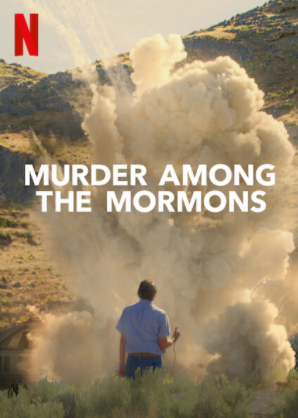Netflix Original ‘Murder Among the Mormons’ receives mixed reviews after release

Photo by Netflix
Netflix original “Murder Among the Mormons” movie poster.
On March 3rd, Netflix released a true crime documentary that explored a series of bombings in Salt Lake City, Utah in 1985 that had a profound effect on the community. In a three part series, Murder Among the Mormons takes an extensive look into the investigations of the three bombings, one of which injured Mark Hofmann who during this time was one of the more famous dealers in rare antiques. Some of the documents that Hofmann discovered, such as the White Salamander Letter, had a large impact on the Church of Latter-Day Saints (LDS) as they redefined the original formation story of the Mormon faith.
Throughout this documentary, the audience is introduced to the friends, family, and major players involved in Hofmann’s life. It is later revealed that almost all of Hofmann’s great discoveries, which were authenticated by both the FBI and the Library of Congress, were forgeries. This revelation provided Hofmann with a significant motive to murder some of his fellow business colleagues like Steve Christensen, and even set off a bomb in his own car to avoid being considered a suspect. In 1987, Mark Hofmann plead guilty to multiple counts of murder, fraud, and theft and was sentenced to life in prison.
While the documentary series has gained significantly favorable reviews, many critics argue that analysis of Hofmann’s motivation as presented by directors Jared Hass and Tyler Measom was far too shallow. Not only did Hofmann show no signs of empathy or regard for human life, some of his forgeries were created in an attempt to sabotage and undermine an entire institution of faith. Originally the pitch for this documentary was set for six episodes, however after Netflix and BCC Studios became a part of the project, it was reduced down to only three. Many people feel as though the documentary series should have been able to maintain its original six-episode status in order for the directors to provide the audience with a far more thorough, well-rounded understanding of Mark Hofmann and his forgeries.
Another topic of controversy that has gained some traction since the release of this series was the directors’ portrayal of the role that the Mormon church played in Mark Hofmann’s forgeries and the bombings. Many quotes from church critics were included that suggested that the Mormon church attempted to “hide embarrassing documents” and “propagate false narratives.” Throughout the series this tone of suspicion continues to progress, possibly leaving some viewers to question whether the church played a role in the bombings. Leaving this narrative widely open to interpretation for two out of the three episodes implies that being involved in the Mormon document business is more dangerous than the crimes committed by Mark Hofmann himself.
Despite these disputations, I encourage anyone who is interested in true-crime investigations and documentaries to give this series a watch. Learning about the rare-document collecting business and the science behind creating accurate forgeries are highlights exclusive to this series that makes it stand out from most of the other crime documentaries that Netflix has to offer.

Hi, my name is Kamryn Snyder and I am a senior at East High. I am so excited to be a part of the Oracle staff this year as the editor-in-chief! Here at...


